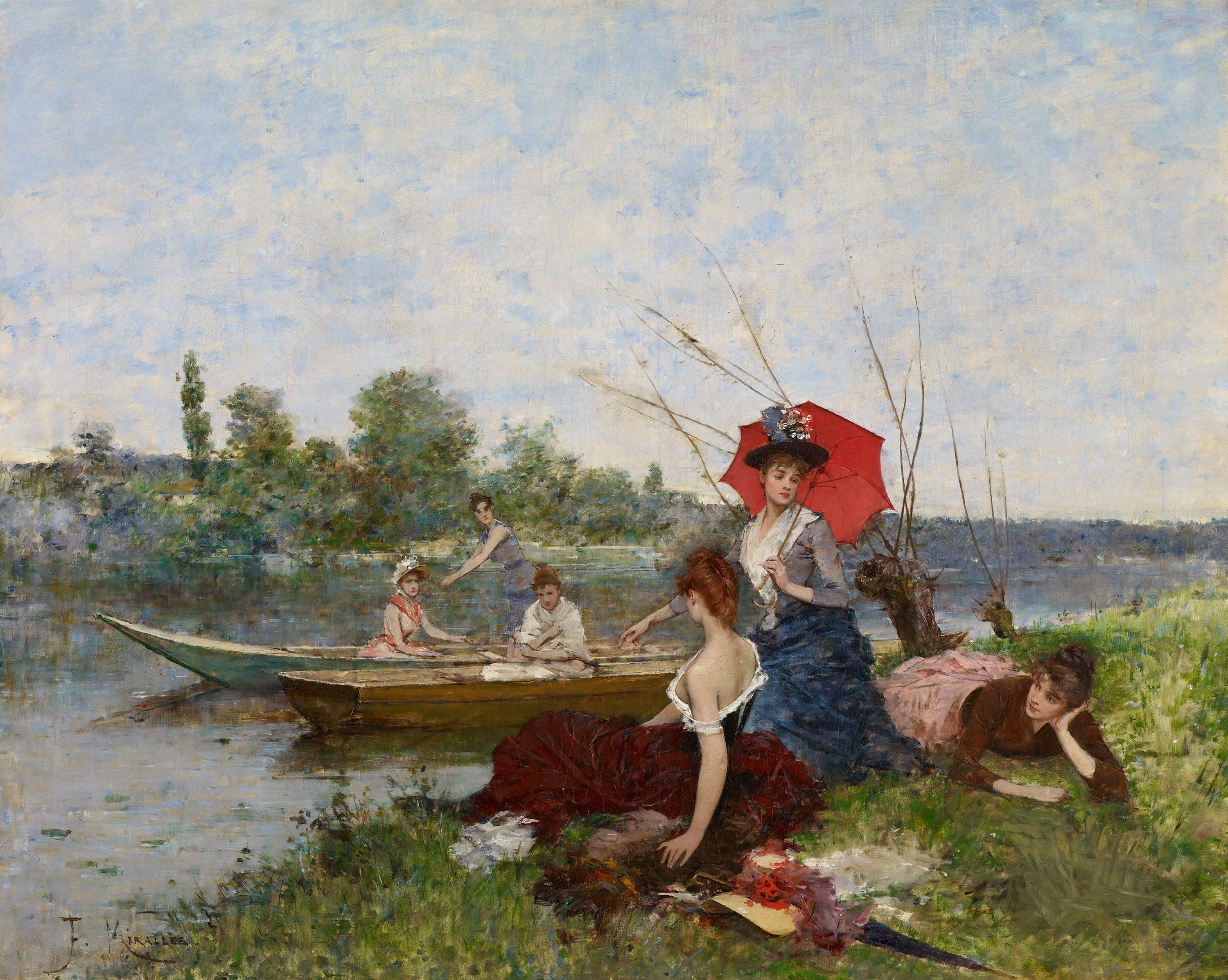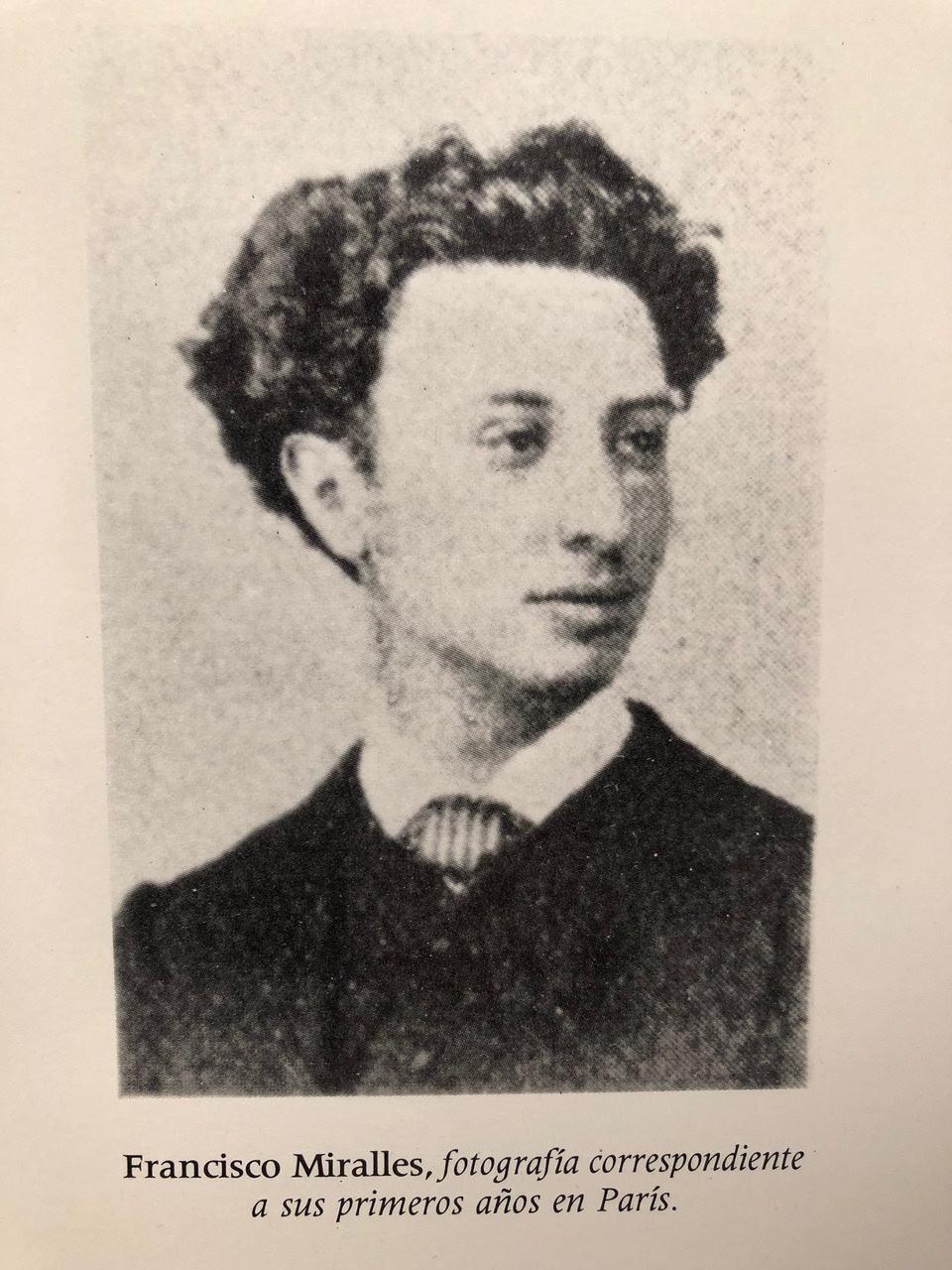-
Francesc Miralles
Valencia 1848 - Barcelona 1901
Into the Park. Paris, Bois de Boulogne
c.1895-1896
Oil on panel
46 x 38 cm
Awards
1875 - Silver Medal, Exposition des Beaux-Arts, Dieppe (France).1877 - Silver Medal, Exposition des Beaux-Arts, Angoulême (France).
1885 - Gold Medal, Exposition des Beaux-Arts, Montpellier (France).
1896 - Bronze Medal, III Exposición General de Bellas Artes e Industrias Artísticas, Barcelona (Spain).
Collections (selection)
Museo Colección Carmen Thyssen-Bornemisza, Madrid (Spain).Museu Nacional d'Art de Catalunya, Barcelona (Spain).
Musée de Beaux-Arts de Brest (France)
Círculo del Liceo, Barcelona (Spain)
Exhibitions
"PARÍS A PARÉS. À la recherche de la Ville Lumière". Barcelona, Sala Parés, 1st December 2018 - 3d February 2019.Francesc Miralles moved to Paris aged 17 or 18, where he set up his workshop at 75 Boulevard Clichy -according to Santos Torroella, although his biographer the Viscount de Güell maintains that he lived at number 66 - in the heart of bohemian Montmartre, and a stone's throw from the Moulin de la Galette and the Place Blanche. There, and from these years 1865-66, he spent much of his adulthood until his return to Barcelona in 1893.
Miralles parents always believed that he would never be a man of material means, but would remain an idealist, always in need of the support of family. For this reason they periodically sent money to cover his expenses in the French capital; in fact, Miralles did make a living in Paris; though it was not a lavish existance, it was happy.
Miralles became absorbed early on by the intoxicating life of Paris at the beginning of the Third French Republic, remaining there for thirty years, returning to Barcelona sporadically to visit family and friends. Miralles was a disciple of the workshops of Paul Césaire Gairto between 1866 and 1867, and of Alexandre Cabanel between 1867 and 1868. He possibly also entered the workshops of teachers of the Imperial School, perhaps for a greater chance at admission to this school. It is known that Miralles copied the compositions of the great masters of the time in the Louvre and also knew the works that were on display in the Musée du Luxembourg.

Portrait of Francesc Aurigemma i Triay (c.1880-1882).
Miralles workshops in Paris were located first in Montmartre, and then on the Rue Lafitte, where it is possible that he worked in the company of Arturo Candela. After the Franco-Prussian War in 1872, he placed his studio near where Sarah Bernhardt, Léon Bonnat and Enric Mélida, husband of a daughter of Bonnat, lived. There Miralles frequented the Ballroom El Alcázar, a place where they went from the "amateur" art aristocracy, through Princess Matilde Bonaparte, to the writer Alexandre Dumas, fils and also the painters Leon Gêrome, Ernest Meissonier and the Impressionist Edgar Degas, as well as famous merchants Adolphe Goupil and Durand-Ruel.
Another of the places Miralles frequented often was the Pleyel Concert Hall, where his friends, Ramiro de la Puente, Marqués de Vil·la Alta, Mario Calado and Elisa del Rey became famous concert performers; the Theater of the Italians; the French Comedy and the Opera House, and possibly also Le Chat Noir, the Moulin Rouge, founded by Josep ller i Roca, and the famous carnival dances of Les Folies Bergère.
Francisco's extraordinarily beautiful sister, Carmen Miralles, also served as his model and inspired his work. Carmen, years later, would marry the well-known Dr. Salvador Andreu, who used his great fortune to contribute to the development of Barcelona. Miralles was selfless not only towards his family, but his artist friends too, as noted in the following tale. When one of them went through financial difficulties, he recommended them to customers who went to his own workshop in search of works, saying, "You want good Spanish painting?”, so go to my friend X's house who does it better than me. It is documented in 1871 Miralles visited Normandy, and had another trip in 1880 in the city of Joinville. 18] Between 1862-1863 and 1893, Miralles exhibited more than once in the Paris Salon ,where his works were very well received, as well as in various exhibitions in the Sala Parés with paintings that he himself sent from France.

Francesc Miralles, A day in the beach, 1880.

Francesc Miralles, Avenieu Foch with views to Triomph's Arch, c. 1880
The Parisian views of Francisco Miralles epitomize the atmosphere of the Belle Epoque. In the painting we present, a nanny walks a child with a pram, whilst two ladies walk in front of her. The scene is set in the Bois de Bolougne. The place was transformed into a park by Napoleon III in 1852. In the following years, it was redesigned with open grass areas, and populated with trees - beech, cedar, chestnut, elm and exotic plants. Between 1855 and 1858, the Longchamp Racecourse was built, making it the main setting for horse riding in Continental Europe.

Francesc Miralles, Boating, c.1888-1890. Oil on canvas, 74 by 91,5 cm.
Museo Colección Carmen Thyssen-Bornemisza, Madrid.

Picture of Francesc Miraller, taken during his first years in Paris.
Bibliography
Santos Torroella, Rafael. El pintor Francisco Miralles. Un catálogo analítico. Editorial RM. Barcelona, 1974, rep. p. 200, num. cat. 207.
